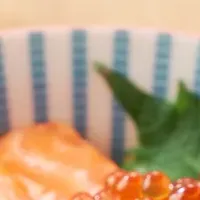
Revolutionizing Packaging: VTT Introduces Innovative Origami Technology for Sustainable Solutions
Introduction
In an ambitious effort to address environmental concerns in the packaging industry, VTT Technical Research Centre of Finland, in partnership with Aalto University and several industrial collaborators, has introduced a novel technology that transforms cardboard into origami-inspired packaging. This groundbreaking innovation promises not only to enhance the sustainability of packaging solutions but also to captivate the aesthetics of design-conscious consumers.
The Concept of Origami in Packaging
The origami concept is ingeniously incorporated into the production of fibre-based packaging materials. The technology allows for a continuous process of creating intricate structures from cardboard rolls, fundamentally changing how these materials are utilized in commercial settings. By leveraging the principles of origami, VTT's new packaging solutions exhibit unique properties, such as enhanced durability and reduced weight, making them strong contenders against traditional protective packaging materials, like plastic and expanded polystyrene.
Environmental Impact and Market Demand
As e-commerce continues to flourish, so does the need for innovative packaging solutions that address global sustainability challenges. The FOLD and FOLD2 projects, which involve 13 innovative companies, organizations, and academic institutions, seek to revolutionize the use of cardboard by developing new applications that are flexible, versatile, and eco-friendly. The creation of these origami structures comes at a time when businesses are increasingly being scrutinized for their carbon footprints and the environmental impact of their packaging choices.
Unique Properties of the Origami Structures
One of the most notable advantages of the origami-inspired packaging is its ability to maintain an attractive appearance while being environmentally responsible. Designers have already shown keen interest due to the visual appeal of the folded structures. As emphasized by Jarmo Kouko, the research team leader at VTT, the technology involved in this project may also facilitate the production of foldable materials from recycled sources, further supporting environmental goals.
Innovation Through Mechanical Folding
The innovative process behind the origami folding is what sets it apart. Traditionally, origami requires meticulous hand folding that can be time-consuming and inconsistent in quality. Utilizing mechanical folding techniques allows for uniform precision and efficiency, enabling mass production without altering the basic materials used. The chosen Miura origami pattern, known for its simplicity, allows for the possibility of applying folding techniques to various materials beyond cardboard, including PET film and even aluminum foil.
Industry Collaboration for Remarkable Growth
The journey of the FOLD project has been marked by collaboration among notable industry players, eight of whom contributed directly to the development and funding efforts. The follow-up phase, FOLD2, kicked off in March 2024 with a focus on expanding applications to additional materials while partnering with European firms for pilot projects and commercialization.
Design Possibilities: Beyond Traditional Packaging
The unique properties and visual appeal of the origami material have sparked significant interest among designers and brands. Demonstrations of the material have been showcased at the 2023 Design Weeks held in Finland and the Netherlands, revealing its potential application in luxury packaging, particularly in the cosmetics industry. As noted by industry professionals, the aesthetics of packaging are essential for enhancing the consumer experience, and FOLD presents an elevated unboxing experience while remaining conscious of environmental impacts.
A Multidisciplinary Approach
The FOLD project exemplifies the potential of interdisciplinary collaboration, integrating insights from mathematics, materials science, and design engineering. According to Kirsi Peltonen, a mathematics lecturer specializing in origami at Aalto University, this initiative raises numerous research questions while generating practical solutions across various fields. Beyond packaging, implications for products like abrasives and interior design structures have been highlighted.
Conclusion
In conclusion, VTT's origami packaging technology represents a pivotal advancement in the field of sustainable materials. With its incredible lightweight yet durable properties, this innovative approach not only addresses the pressing need for environmentally friendly packaging but also opens new avenues for creativity and design across industries. As the initiative progresses, there is a palpable excitement about the future applications of this technology, giving hope for a greener and more sustainable packaging landscape.
For More Information
For further inquiries about the FOLD project and ongoing developments, please contact:
Jarmo Kouko, Research Team Leader at VTT, via [email protected]
Satu Holm-Jumppanen, Manager of Communications at VTT, at +358 50 305 4718 or [email protected]
Topics Consumer Products & Retail)










【About Using Articles】
You can freely use the title and article content by linking to the page where the article is posted.
※ Images cannot be used.
【About Links】
Links are free to use.